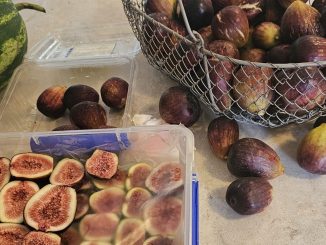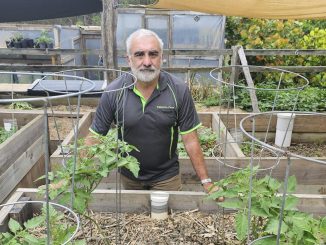
Sweet potato will grow well locally and once you have them established they need very little attention, and under normal conditions, little watering.
Selecting the appropriate sweet potato variety is an important first step. The most popular choices locally would probably be the orange-fleshed varieties, such as Beauregard and Northern Star. These varieties thrive in our subtropical climate and provide a tasty and reliable harvest.
Sweet potatoes like well-draining, loose soil.
The best way to propagate sweet potatoes is from slips or cuttings taken from mature, disease-free sweet potatoes. Place these slips about 30 centimetres apart in rows, with rows spaced at least 90 centimetres apart to allow for growth and easy harvesting.
Sweet potatoes are heavy feeders so either start with rich well composted soil or consider regular fertilisation throughout the growing period. Weed competition can be detrimental to sweet potato growth. Mulching with straw or sugarcane mulch can help suppress weeds and retain soil moisture. Sweet potatoes are susceptible to fungal issues like powdery mildew. Regular checking for signs of trouble and prompt action are important.
Sweet potatoes can be harvested around four to six months after planting. Carefully lift the leaves and examine the Sweet potatoes that are found where the vine meets the soil. When they reach a suitable size gently dig up the sweet potatoes, taking care not to damage them. Allow the harvested sweet potatoes to sit for about a week in a warm, well-ventilated area to develop their sweetness and heal any minor cuts or bruises.
Proper storage is essential to enjoy your sweet potato harvest over an extended period. Keep them in a cool, dark, and well-ventilated area, such as a cellar or pantry, where temperatures range from 10-15°C.
This will help prevent sprouting and decay.





